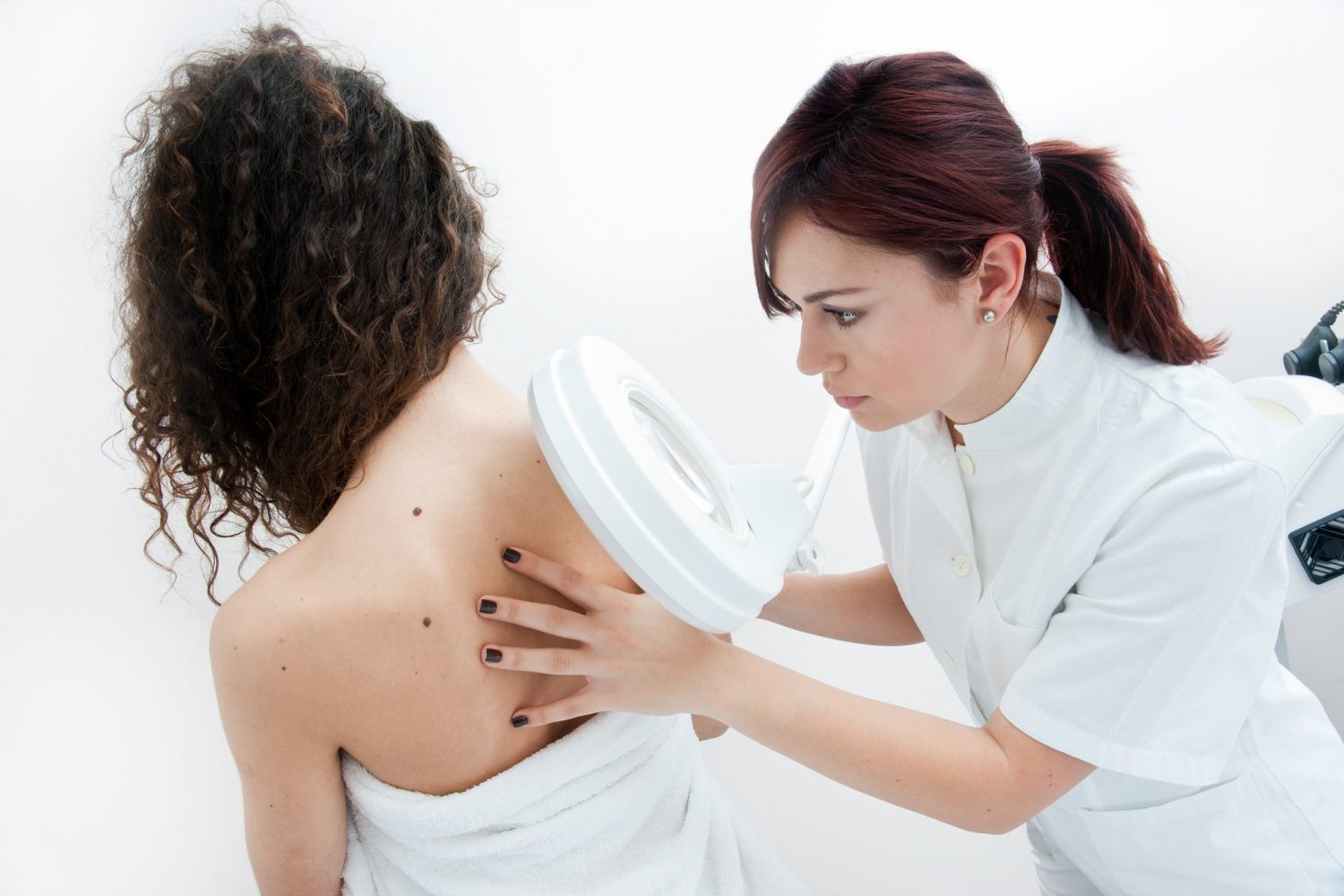Skin cancer screening is recommended for adults who have an increased risk because they have a higher chance of getting the disease.
Being at increased risk doesn’t mean you’ll definitely get skin cancer. But you may need to start regular screening exams, so if you do get cancer, your dermatologist finds it at its earliest stage. When found early, the chances for successfully treating skin cancer are greatest.
Along with regular exams, stay aware. This simply means you should be familiar with your skin, so you’ll notice changes. Then, report them to your doctor without delay.
Promptly show your doctor or dermatologist any suspicious skin area, a sore that doesn’t heal or a change in a mole or freckle.
Get a full-body skin cancer screening exam every year if you identify with one or more of the groups below.
Inherited risks to be aware of include, but are not limited to, the following:
- Red hair and freckles
- Albinism
- More than 50 moles
- Family history of melanoma
- Genetic syndromes that make you sensitive to the sun
Environmental exposures can include too much sun exposure, frequent trips to the tanning salon and one or more blistering sunburns. Precancerous conditions such as actinic keratosis and dysplastic nevi (unusual moles) are also reasons for a full-body skin cancer screening exam each year.
If you have skin cancer history of basal and/or squamous cell cancer or you have had prior treatment such as radiation, immunosuppressive or other cancer treatments that increase risk, you should at least schedule annual visits with your doctor, if not more frequently.
Knowing how to identify skin anomalies can help you make good decisions.
 Look for the ABCDEs of skin cancer to help you more easily identify a suspect skin condition.
Look for the ABCDEs of skin cancer to help you more easily identify a suspect skin condition.
- A – Asymmetry – spots are irregularly shaped or differ on one side
- B – Border – irregular or undefined edges around a spot
- C – Color – color is not consistent across the spot or coloring is different than other spots on your body
- D – Diameter – spots of any size may be cancerous, but anything larger around than a pencil eraser needs to be examined by a dermatologist right away
- E – Evolving – spots that are changing quickly
There are many different types of skin cancer that all have their own warning signs.
If you have a sign of skin cancer that matches to any of these identifiers, you should see your dermatologist or doctor at once. It might be of more concern than you think. So often we put things off until it’s too late, but the possibility of skin cancer should never be one of those things. In fact, proactive decisions where skin cancer is concerned can be life-saving.
The Skin Cancer Foundation reports more than 3.5 million skin cancers are diagnosed annually, affecting more than 2 million people. Melanoma, a more dangerous type of skin cancer, accounted for more than 73,000 cases of skin cancer in 2015.
Be just as vigilant about annual skin cancer screenings as you are about annual medical and dental checkups. They are equally important and can possibly be even more so.
What Does Skin Cancer Look Like?
Watch our latest video about skin cancer.
Click here to learn more about Annual Skin Examinations.
Looking to get a Skin Cancer Screening?
If you have other dermatological conditions ask your board-certified dermatologist for an examination of any of them. We have multiple locations throughout the country, so fill out our simple online form to get in touch with us. One of our local team members will reach out to you shortly to answer your questions or schedule an appointment for you to visit us soon.
Find a location near me
or


 Look for the ABCDEs of skin cancer to help you more easily identify a suspect skin condition.
Look for the ABCDEs of skin cancer to help you more easily identify a suspect skin condition.